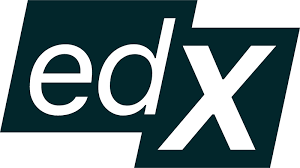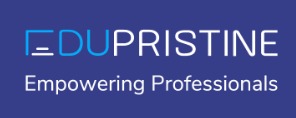Top 10 Financial Modeling Courses In Finland With Placements
September 21, 2025|
Varun|
Financial Modeling, Courses|
Modern finance is built on financial modeling. Such facilities enable users to make the best of the financial data and analyse its future potential on financial grounds to make strategic decisions. The demand for financial modeling expertise is growing in Finland because of an expanding economy and the country’s emphasis on technological innovation and sustainability. This article will take you through why financial modeling is so important and the top 10 Financial Modeling Courses in Finland.
What is Financial Modeling?
A very powerful skill in a world relying on data is financial modeling. It provides professionals with the ability to understand, quantify and predict a business or investment’s financial performance. Financial modeling means the creation of spreadsheet-based tools in an attempt to represent real-life financial cases. These models assist us in decision-making concerning profitability, risk and value creation.
In Finland, these skills have a huge impact in sectors such as technology, renewable energy and manufacturing. Especially in helping support Finland’s startup ecosystem. It relies on allocating the models of financing for the business, the analysis of the market and the planning of future growth.
Such a process generally includes forecasting revenue, expense, and cash flow, as well as considering investment decisions and risk assessment. Learning financial modeling teaches people powerful analytical and strategic tools for illustrating and exploring. Consequently, they are indispensable across all of the sectors of corporate finance through consulting.
Today, whether you are a student, a working professional or a business owner, it is necessary that you should know financial modeling in a competitive market today. This is where financial modeling institutes in Finland step in.
The Function of Financial Modeling in Finland’s Economy
Financial modeling is an important factor in Finland’s economic environment and the decisions of working life. The strategies of country’s financial strategies are staked on the quality of its modeling in a robust economy. Innovation, sustainability and technological advancement are the basis of its economy.
1. Support Finland’s Startup Ecosystem
In the last few years, Finland has experienced a surge in startups, primarily in technology and gaming. Finance models are needed by entrepreneurs to persuade investors to invest. And to proceed to the rounds of funding and assessing whether a business might want to grow in a certain way. Models are used by startups to determine what revenues they can have, break-even points, and review the risks when the market conditions change.
2. To Enable Renewable Energy Projects
Finland is working with its commitment to sustainability, and so it is also investing in renewable energy projects like wind and solar power in Finland. Financial models are indispensable to these sectors for energy output forecasting, calculating returns on investment and evaluating project viability. The latter helps in deriving the impact of different types of subsidies and regulatory policies on project efficiency.
3. Corporate Strategy and Decision Making
Merger and acquisition planning and market entry strategies in Finland’s corporate landscape are often at least partly driven by financial modeling. Companies rely on highly detailed models that are used to forecast results, optimise resource allocation, and build strategic roadmaps. It enables businesses to remain competitive in the worldwide markets as well as in the local markets.
4. Public Sector Planning and Policy Implementation
The use of financial modeling is a tool for the development of budgets, the assessment of public infrastructure projects, and the formulation of economic policy by the Finnish government. At the same time, national finances are evaluated for their long-run impact on healthcare reforms, i.e., education investments and social welfare programmes.
5. Risk Management Banking and Insurance Sectors
Models are used by the Finance institutions in Finland to estimate risk, decide on pricing strategies and meet their practical needs. Financial modelling through scenario analysis and stress testing is a vital part of the financial model. And the banks and insurers use it to buffer against market volatility and economic shocks.
Financial modeling is necessary for Finland’s diversified economy, and we cannot do it without it fundamentally. Thus, it allows professionals and organisations to make well-based decisions, use their resources efficiently and still grow in a highly competitive global arena.
Benefits of Financial Modeling Courses in Finland
The benefits of financial modeling institutes in Finland are that they can transform professionals and businesses alike using the rich Finnish economic and industrial background.
1. Improving Financial Decision Making
Financial modelling in Finland’s dynamic industries like technology, forestry and renewable energy is a powerful tool to quantify potential market, allocation of resources and project feasibility. It allows professionals to be able to make well-informed and data analysis-based decisions.
2. Improved Career Prospects
Being able to model financially increases job prospects in real sectors of high demand, such as corporate finance, investment banking, and management consulting. To climb up the career ladder in Finland, where Nokia and Kone are two global companies, the skill to do this is a must.
3. Innovation and Startups Support
Slush and Tekes are examples of how Finland has a very thriving startup culture and how it’s supported by initiatives such as those. Therefore, financial modeling is a useful tool that can be channelled out by entrepreneurs to attract investors and build a compelling business case and spherical operations successfully.
4. Global Applicability
It is also fair to say that the financial modeling skills that one acquires in Finland are globally relevant, and thus one can work in any market, no matter where in the world it may be. Especially given how Finland values globalised trade and cooperation, these are valuable skills for exploring opportunities beyond borders.
5. Supporting Public and Private Sectors
Optimising budgets, estimating economic trends and planning long-term strategies require financial modeling. These skills are used by professionals in Finland’s public sector and private sector companies to improve efficiency and achieve results.
6. Sustainability and Green Financing
Finland is a global pioneer in green technology and sustainable development. This is in terms of green and eco-friendly action, including renewable energy. Financial models are essential in evaluating the financial soundness of green projects that are consistent with growth but aligned with environmental advances.
7. Connectivity between Academia and Industry
Studying financial modeling is incorporated into the university and the institution’s programs to make students employable in the workforce. These courses bridge academic learning with practical application, which makes graduates ready for the job market.
8. Data-Driven Innovation
The combination of financial modeling across sectors plays a major role in Finland’s focus on digitisation and analytics. Having these skills, professionals can help in innovative projects, for example, in the field of AI and finance or data visualisation for strategic planning.
The following table summarises the benefits of Financial Modeling Courses in Finland.
| Benefits | Provided by the Courses | Description |
| Improving Financial Decision Making | ✅ | It facilitates precise analysis and forecasting, therefore making informed and strategic decisions. |
| Improved Career Prospects | ✅ | Teaches students skills in demand in finance, investment, and corporate sectors. |
| Innovation and Startups Support | ✅ | Tells startups how to make effective financial plans and how to attract funds. |
| Global Applicability | ✅ | Learners are prepared for international roles using universal financial modeling standards and practices. |
| Supporting Public and Private Sectors | ✅ | It serves the benefit of both sectors of optimised resource allocation and financial strategies. |
| Sustainability and Green Financing | ✅ | Supports sustainable business models which unite environmental and social concerns. |
| Connectivity between Academia and Industry | ✅ | Helps foster collaboration; supplies real-world implementation and practical insights into financial education. |
| Data-Driven Innovation | ✅ | It provides the opportunity to use financial data to encourage innovative solutions using predictive and strategic insights. |
Financial Modeling Core Components
Financial modeling rests on a structured framework that helps assess and predict the investment’s financial performance. Here are the core components that form the backbone of this critical skill:
1. Revenue and Sales Projections
One of the core pieces of a financial model is the ability to predict revenue. In addition to this, you analyse historical sales data, market trends and growth rates to come up with future earnings. This allows you to make projections for different product lines, customer segments, or regions and have a good understanding of your potential revenue streams.
2. Cost Analysis and Management
The cost breakdown is important and includes both fixed and variable expenses. In this section, it looks at operational costs, raw materials, the marketing budget and other expenditures. Financial models assist businesses in determining where to cut costs and reduce while maintaining optimisation.
3. Cash Flow Analysis
Cash flow modeling tracks cash inflows and outflows over a set period. It includes operating cash flow, investment cash flow and financing cash flow. Cash flow prediction provides an accurate chart that ensures liquidity and financial well-being.
4. Profit and Loss (P&L) Statements
A revenue summarising income, expenses, and losses over a designated period is called a complete income statement. It is the snapshot of the profitability of the company and is fundamental to understanding its financial status.
5. Balance Sheet Integration
The second model includes balance sheets defining assets, liabilities and equity. Through this integration, stakeholders will be able to have a look at the company’s net worth and financial leverage.
6. Sensitivity and Scenario Analysis.
In models, scenarios are commonly included as tests of the results that arise with differing conditions, e.g., recession and expansion of the market. It is used to explore how key variable changes, such as interest rates or raw material costs, affect outcomes, and sensitivity analysis is used in risk management.
7. Valuation Models
They try to calculate the value of a business. Methods such as Discounted Cash Flow (DCF) analysis, Comparable Company Analysis (CCA) and precedent transactions are utilised to calculate the intrinsic value or marketability of a company.
8. Ratio Analysis
The performance and strategic rationale can be evaluated with some such financial ratios as Return on Investment (ROI), Debt-to-Equity Ratio and Net Profit Margin. These provide quick insights into operational efficiency as well as financial health.
9. Budget and Forecasting
It consists of tools for preparing annual budgets and multiyear forecasts. A set of these tools explicitly aligns financial goals with organisational strategies, allowing for long-term planning.
10. Integration of Advanced Tools
The model is made more powerful with advanced software like Excel and Python and even with specialised financial tools. Using macros and VBA in combination decreases variation and increases efficiency in dealing with complex datasets.
Together, these components help conjure a dynamic system for financial planning that allows businesses to make data-driven decisions, reduce risk, and take advantage of opportunities effectively.
List of Top 10 Financial Modeling Courses in Finland
| Institutes | Mode | Module Specific Trainers | Mock Interview |
| IIM SKILLS | Online | ✅ | ✅ |
| Helsinki School of Economics (HSE) | Offline | ✅ | ❌ |
| Finland Chamber of Commerce Training Programs | Offline | ✅ | ❌ |
| Association of Finnish Accounting Firms (Talous Hallinto Liitto) | Offline | ✅ | ❌ |
| Coursera | Online | ❌ | ❌ |
| EDX | Online | ✅ | ✅ |
| Financial Edge | Online | ✅ | ❌ |
| EduPristine | Online | ✅ | ✅ |
| Udemy | Online | ✅ | ❌ |
| LinkedIn Learning | Online | ❌ | ❌ |
1. IIM SKILLS
Financial Modeling courses in Finland are offered by an internationally recognised institution, IIM SKILLS. The program consists of hands-on training on tools like Excel and teaches how to create models for budgeting, forecasting, valuation and sensitivity analysis.

Subject matter covered includes balance sheet integration, profit and loss analysis, cash flow management, as well as advanced valuation techniques like Discounted Cash Flow (DCF) and Comparable Company Analysis (CCA).
IIM SKILLS is a flexible online learning platform based on which students in Finland and across the globe can easily access. The course is taught by industry experts and offers a global recognition of the certification upon completion. This is one of the best financial modeling institutes in Finland.
| Courses | Duration | Fees |
| Self-Paced Program | 4 Months | 395.49 Euros |
| Job Assist Program | 4 Months | 660.03 Euros |
| Job Guarantee Program | 4 Months | 1982.74 Euros |

We recommend top Financial Modeling Courses in Oman to elevate your career. Read now.
2. Helsinki School of Economics (HSE)

Aalto University with the Helsinki School of Economics is one of the top institutions and offers specialized financial modeling courses in Finland. Their financial analysis programme is aimed at learning to apply statistical tools and financial software to solve real-world problems.
Through hands-on classes, students learn to merge financial planning with data analytics and equip them for careers in investment banking, corporate finance and risk management.
The course provides unique insight into Nordic markets through case studies, which serve to highlight the regional financial landscape. It is one of the finest financial modeling institutes in Finland.
| Course | Duration | Fees |
| Financial Analysis | 2 years | Not Available |
A must read list of institutes for the best Financial Modeling Courses in Tuvalu.
3. Finland Chamber of Commerce Training Programs

In Helsinki and other cities, the Finland Chamber of Commerce runs financial training workshops and short-term courses for professionals. Some of these programs contain modules on such things as financial modeling, data interpretation and market analysis.
Direct industry insights, case-based learning and networking possibilities with the financial leaders of Finland benefit participants. All these factors contribute to making it one of the finest financial modeling courses in Finland.
| Course | Duration | Fees |
| Financial Modeling | 15 weeks | Not Available |
Read the best Financial Modeling Courses Krgyzstan with placement support.

4. Association of Finnish Accounting Firms (Talous Hallinto Liitto)

Specializing in financial and accounting modeling, these financial modeling courses in Finland are offered by this organization. In particular, their workshops deal with local financial practices, tax regulations and compliance so are highly relevant for professionals in Finland’s financial sector. Participants gain practical knowledge and tools to adapt to the particular financial challenges of the country.
| Course | Duration | Fees |
| Financial Management | 2 months | Not Available |
5. Coursera

The Financial Modeling Specialization offered on Coursera by the University of Illinois is globally accessible. Modules in their financial modeling courses in Finland include business valuation, risk analysis, and advanced Excel techniques.
The finder is a curriculum that fits well those in Finland who want to develop expertise in financial forecasting and scenario analysis. Students also have the opportunity to work on actual capstone projects based on live datasets. This makes it one of the best online financial modeling institutes in Finland.
| Course | Duration | Fees |
| Business and Financial Modeling | Self-paced | EUR 60/month |
| Finance and Quantitative Modeling for Analysts | Self-paced | EUR 60/ month |
Explore the list of top-ranking institutes that offer the best Financial Modeling Courses in Montenegro with their syllabus & other details.
6. EDX

EDX is offering online Financial Modeling courses in Finland. For Finnish professionals and students, this course is particularly relevant as it covers how to integrate financial models into decision-making processes.
It deals with cash flow forecast, capital budgeting and investment appraisal. The course leverages flexible schedules and video lectures to enable students to study at their own pace while earning prestigious certifications.
| Course | Duration | Fees |
| Financial Modeling and Analysis | 4 weeks | Free |

7. Financial Edge

Investment banks and corporate finance professionals widely use Financial Edge for online and in-person training. For those looking to embark on high-impact roles, their Financial Modeling and Valuation Analyst (FMVA) program is very helpful.
It covers building dynamic models, using real-world case studies of mergers, acquisitions and portfolio management. Their financial modeling courses in Finland are accessible online.
In this way Finnish students can learn with other professional commitments on the side, and without being constrained by time.
| Course | Duration | Fees |
| Financial Modeling and Valuation | Self-paced | EUR 165 |
Check out these top Financial Modeling Courses in Dubai with latest curriculum and placement assistance.
8. EduPristine

Financial modeling courses in Finland offered by EduPristine are meant for finance professionals. Their programming is hands-on with advanced Excel, integrated financial statement modeling and valuation techniques.
Even though EduPristine is based in India, its online delivery means Finnish students can secure a place and gain from its industry-relevant curriculum. It is a great option to consider for online financial modeling institutes in Finland.
| Course | Duration | Fees |
| The Financial Modeling Course | 100 Hours | Not Available |

9. Udemy
![]()
There are multiple financial modeling courses in Finland ranging from the beginner level to the advanced level available on Udemy. Topics taught in their courses include startup valuation, sensitivity analysis, and Excel-based modeling.
Their financial modeling courses in Finland have a key advantage for individuals who are looking at costs and flexibility. Udemy is a very popular choice as it is relatively affordable and provides quality training.
10. LinkedIn Learning
![]()
Financial modeling courses are provided by LinkedIn Learning for people who are professionals in a similar field that wish to broaden their skills. A course for the learner in Finland could be Facebook Advertising for Small Business or Excel for Financial Modeling & Financial Forecasting.
As an advantage of the platform, it provides certifications that can be shown on a LinkedIn professional profile to add to employability.
| Course | Duration | Fees |
| Financial Modeling and Forecasting Financial Statements | Self-Paced | EUR 30/ Month |
Frequently Asked Questions
1. Why is financial modeling important in the Finnish financial sector?
Financial modeling is important in Finland’s financial sector since it aids professionals in making decisions based on factual data. This includes data from investment analysis, budget preparation and corporate strategy. In Finland, financial models are commonly used to assess the viability of a project, forecast the financial performance of a company, and evaluate the risks thus helping companies stay competitive in the Nordic region.
2. What are the top financial modeling courses in Finland designed for beginners?
IIM SKILLS can be used by beginners and has an online course with mentorship and practical projects. Platforms such as Coursera and Udemy also provide platforms where one can learn financial modeling at relatively affordable and beginner-friendly prices. Foundation topics such as Excel basics, Financial Statement Analysis, and Introductory Valuation techniques are covered in these programs.
3. Can I learn financial modeling courses in Finland online?
Online financial modeling institutes in Finland are available for learners and professionals. There are several platforms out there such as IIM SKILLS, LinkedIn Learning, Financial Edge, and EDX that offer comprehensive programs with video lectures, interactive modules and real-world projects. Flexible schedules are great features for working professionals, as well as students, who take online courses.
4. What is the cost of attending financial modeling courses in Finland?
The price of financial modeling institutes in Finland varies according to the provider and duration of the programmes. On platforms like Udemy short online courses tend to cost much less, while institutions such as Helsinki School of Economics or Financial Edge charge a higher fee for specialized programs. Additionally, some courses even offer you a free trial or scholarships to help you lower costs.
5. What skills can I learn from financial modeling courses in Finland?
The financial modeling institutes in Finland offer learners skills that include Excel proficiency, financial statement integration, valuation techniques (such as DCF analysis), risk assessment, and scenario analysis. These are viable skills for job titles in investment banking, corporate finance, and strategic consulting. Such expertise is greatly in demand in Finland in technology, cleantech, and manufacturing sectors, for example.
Conclusion
Financial modeling courses in Finland are an interesting way to acquire the highly specific skills required in a fast and agile market. The courses have been invaluable no matter whether they’re for aspiring corporate finance, investment banking, or strategic consulting work. Its variety of programs for beginners and professionals provides learners with the means to transform into key contributors to the robust financial ecosystem of Finland. This is a great time to consider joining one of the financial modeling institutes in Finland.

Varun
Are financial bottlenecks holding your business back? Here's how I can help you: With rich experience in advanced financial modeling and transaction support......


